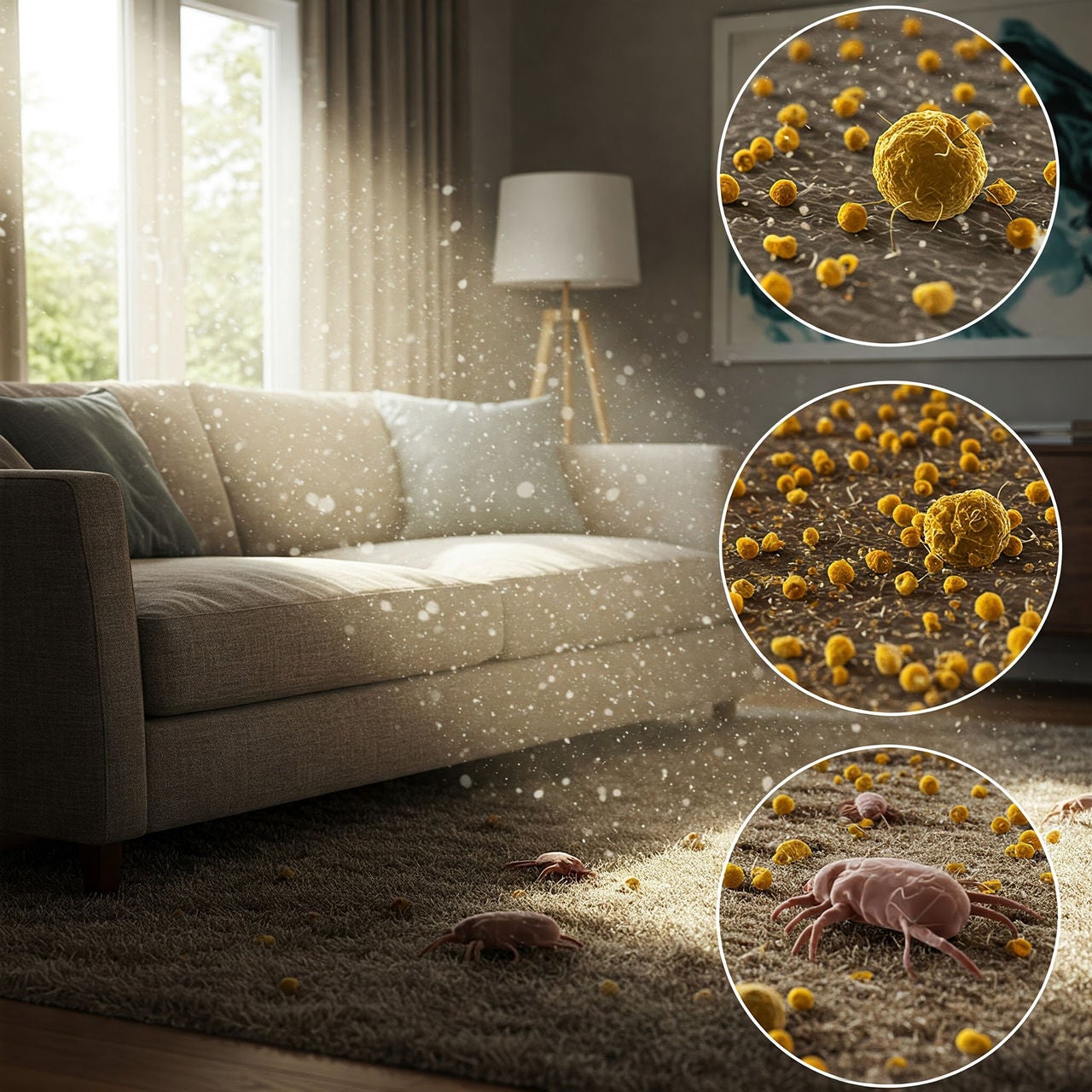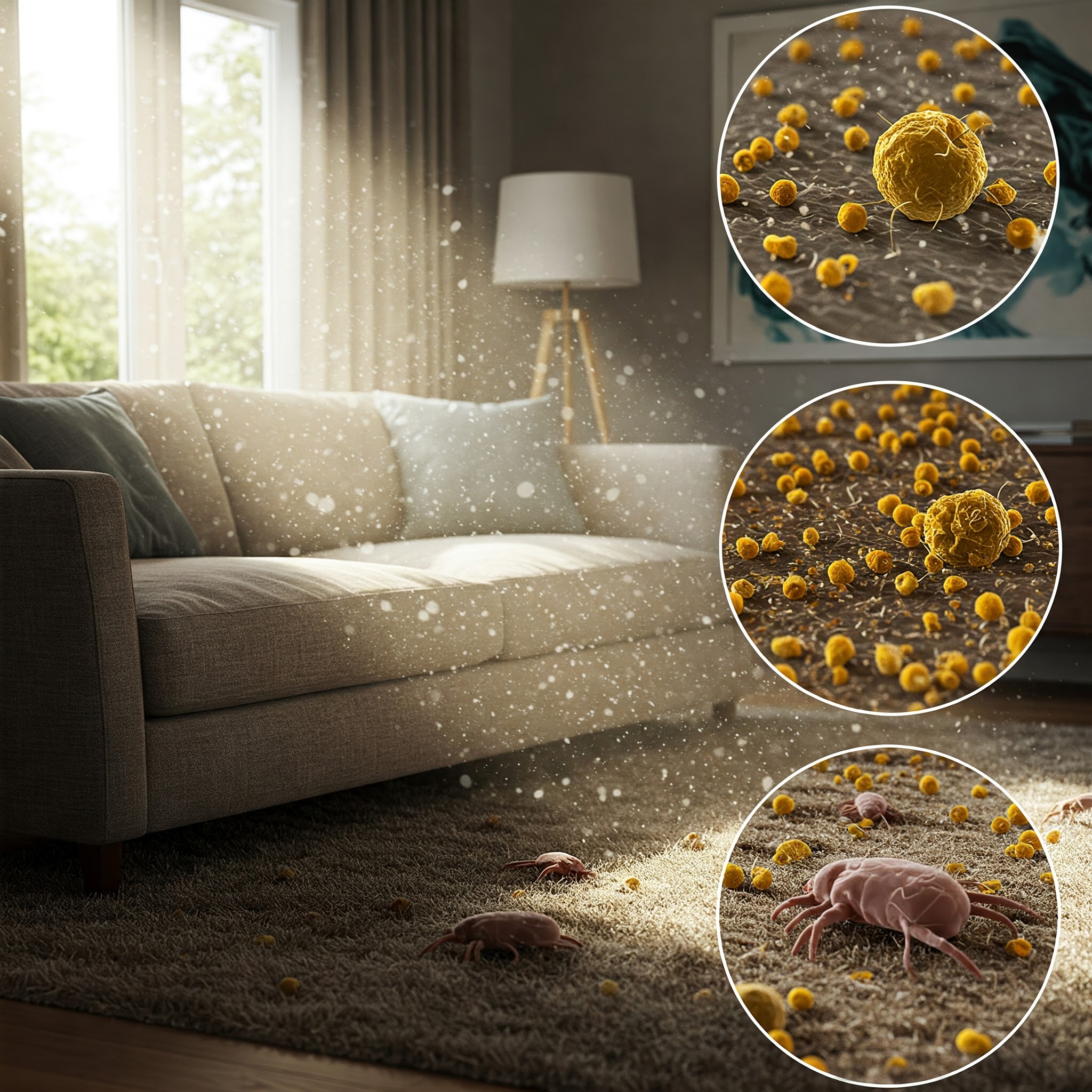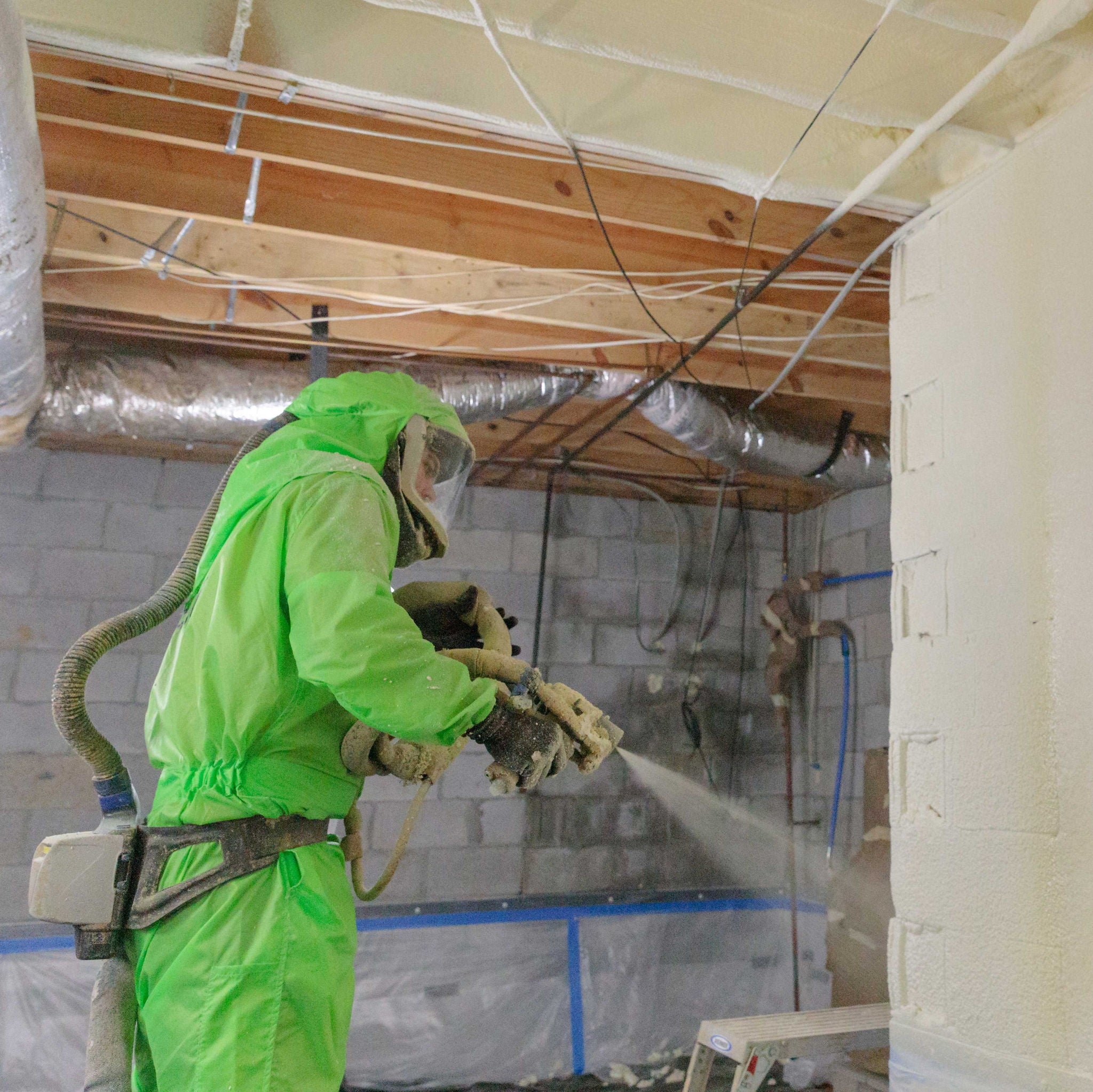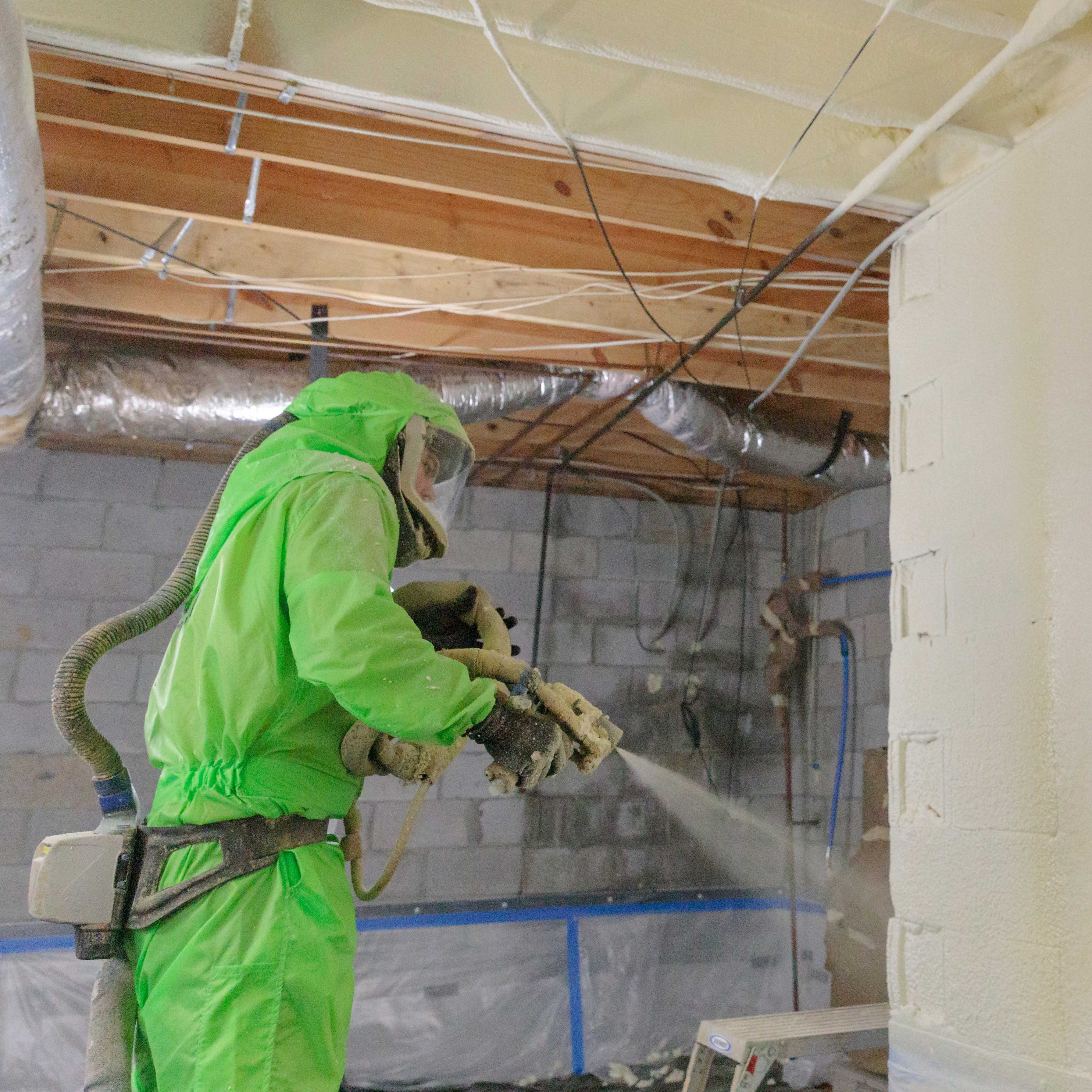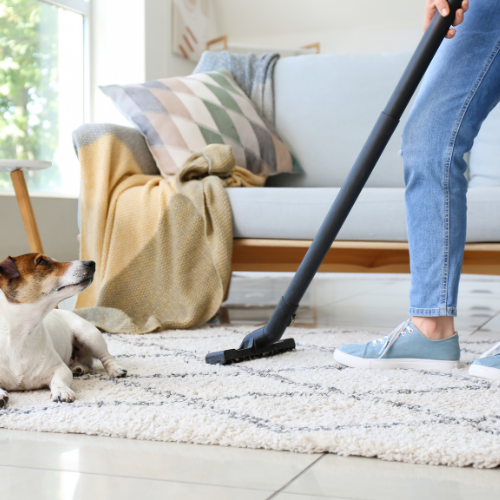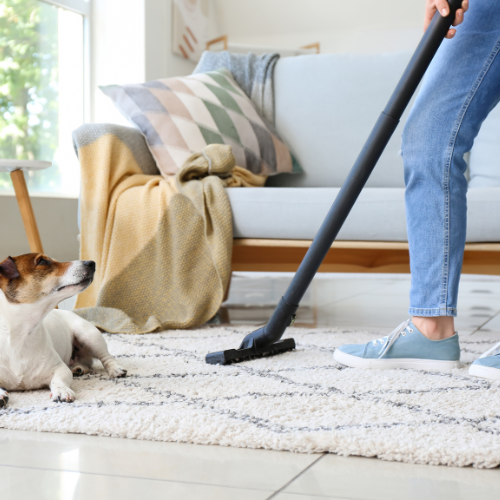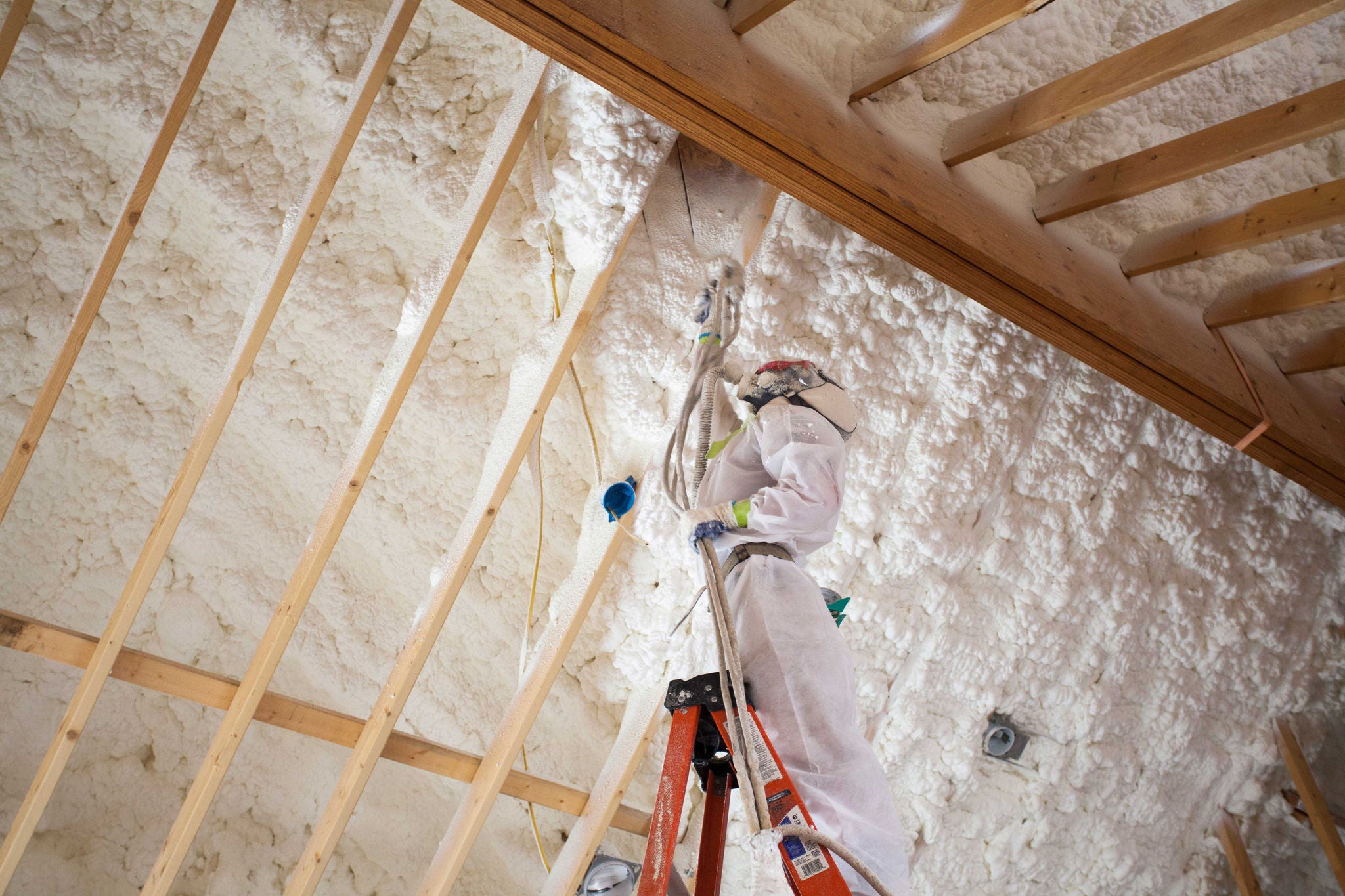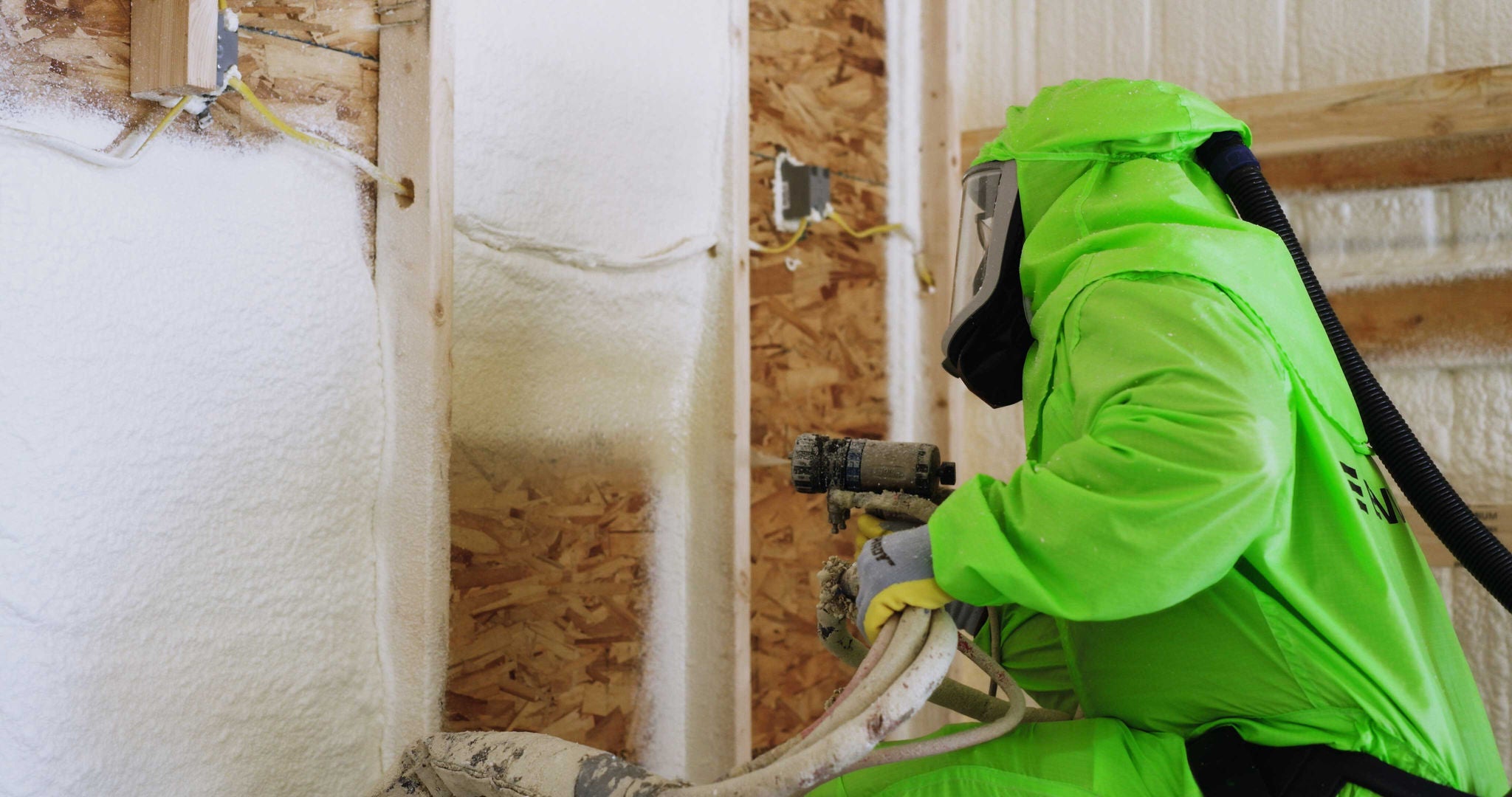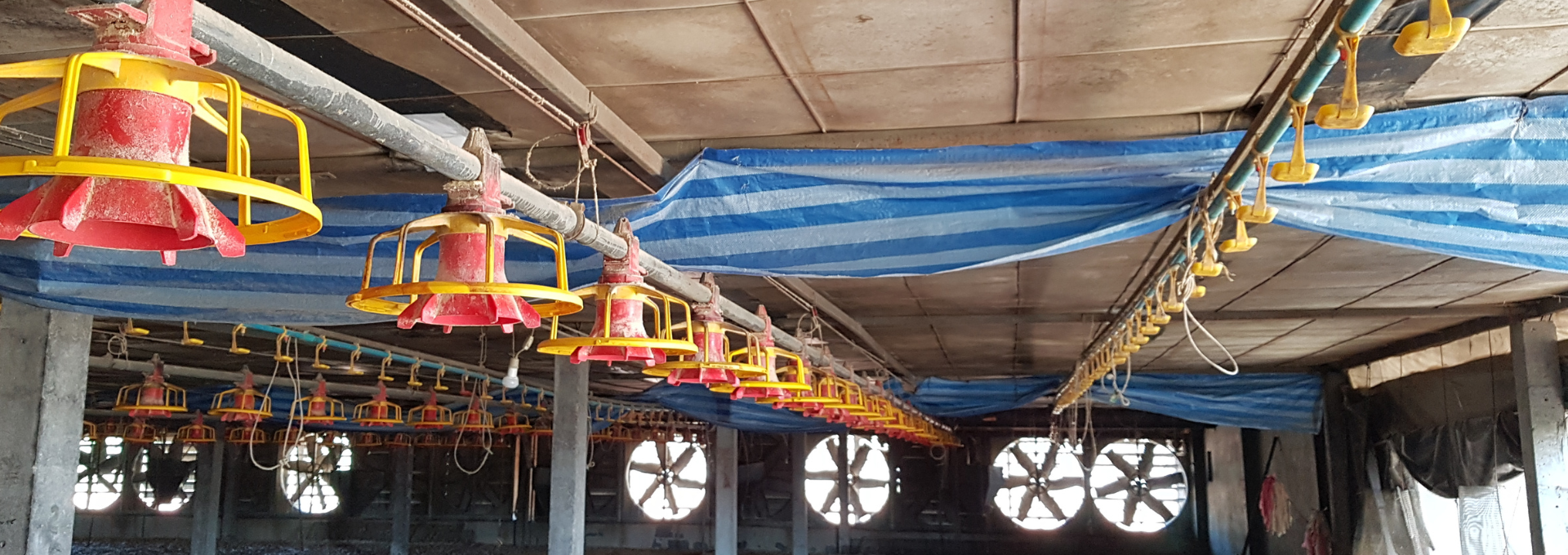Where Allergens Enter Your Home
1. Attic & Roof
Small gaps around roof vents, soffits, and attic openings can let pollen, dust, and other airborne allergens drift inside. If you have traditional insulation, these materials may also collect dust and mold over time.
2. Walls & Insulation Gaps
Uninsulated or poorly insulated wall cavities allow outside air (and the allergens it carries) to seep indoors. Over time, this can lead to poor indoor air quality and discomfort.
3. Windows & Doors
Even with weather stripping, small openings around window and door frames can let pollen and dust sneak in—especially on windy days.
4. Basement & Crawl Spaces
Damp basements and crawl spaces are prime breeding grounds for mold and dust mites. Cracks in the foundation or improperly sealed crawl spaces allow moisture and allergens to rise into the home.
5. HVAC & Ductwork
Leaky ductwork pulls in unfiltered air from attics, basements, and walls, distributing allergens throughout your home. If your duct system isn’t properly sealed, you could be unknowingly recirculating allergens.
6. Garage
Many homes have an attached garage, which can be a major source of pollutants like vehicle exhaust, dust, and outdoor allergens. If your garage isn’t sealed properly, these irritants can make their way into your living space.
7. Plumbing & Electrical Penetrations
Small gaps around pipes, wiring, and outlets create pathways for outside air—and all the allergens it carries—to enter your home.
Other Ways to Reduce Allergens in Your Home
A thermal imaging camera can quickly identify temperature variations.
Breathe Easier with Spray Foam
If you’re tired of battling allergens inside your home, consider upgrading to spray foam insulation. By sealing up the cracks and gaps where allergens enter, you can create a healthier and more comfortable living environment for your family.
Want to learn more about how spray foam can help improve indoor air quality? Contact us today to find out how you can seal allergens out for good!

